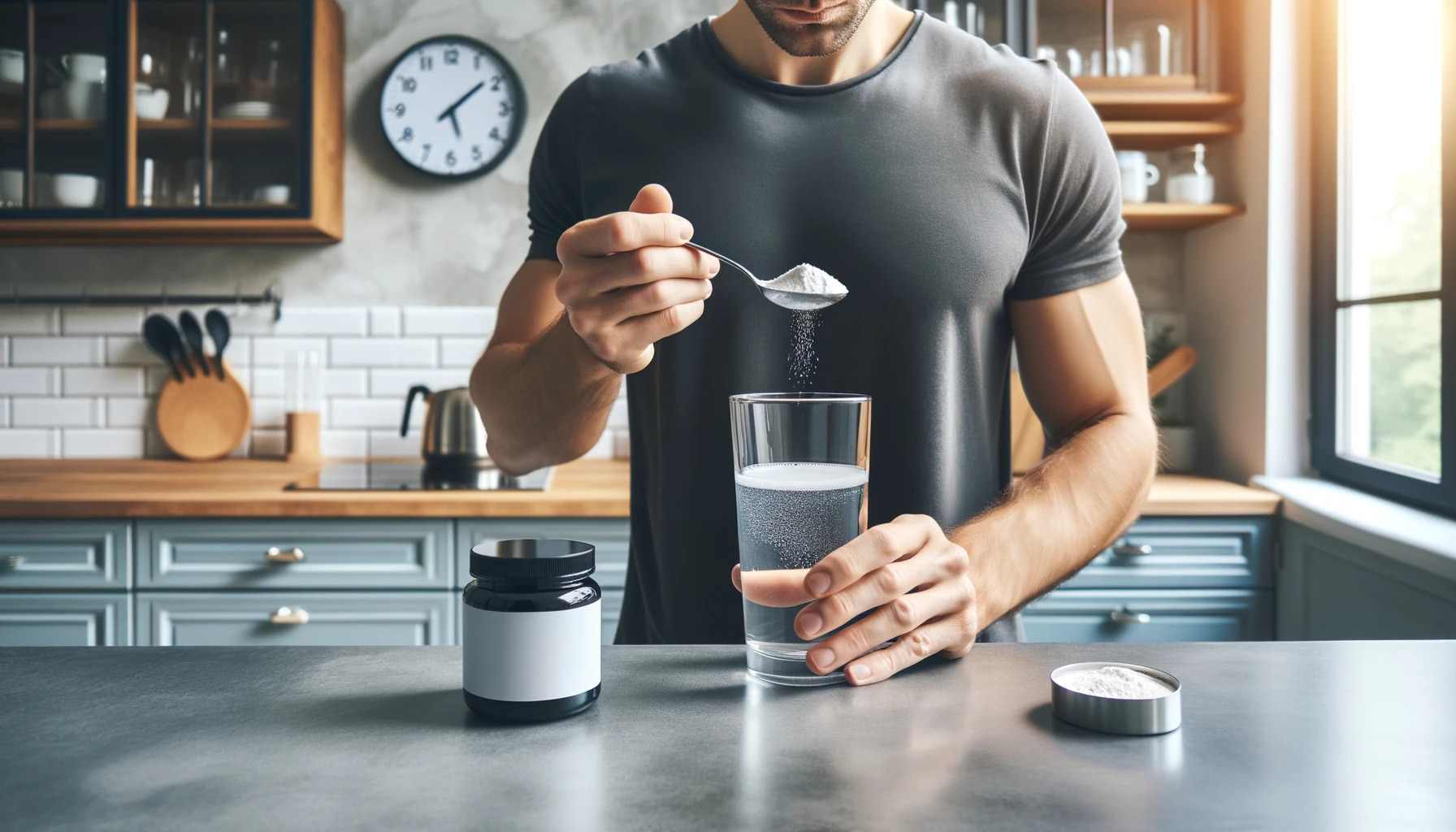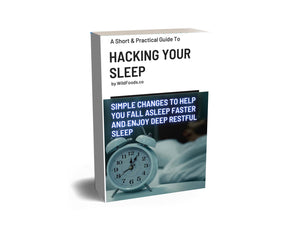Can You Take Creatine on an Empty Stomach? (Timing Creatine Intake)

Taking creatine on an empty stomach is okay but could cause stomach cramps for some people.
Here's a fact: Creatine is a powerhouse for improving performance and muscle growth. This blog will guide you through the best practices for consuming creatine, including if an empty stomach works.
Keep reading—you might be surprised.
Key Takeaways
- You can take creatine any time of day, but eating it with meals might help your body use it better.
- Your body doesn't need carbs to absorb creatine, but they can help make muscles soak it up faster.
- Drinking plenty of water when using creatine is essential to avoid cramps and stay hydrated.
- Look for "creatine monohydrate" on labels to get a supplement that's proven to work.
Understanding Creatine
Creatine fuels your muscles during high-intensity workouts. It turns into energy, boosting muscle strength and growth.
What is Creatine?
Creatine is a substance your body naturally makes.
It's also found in foods like fish and meat. This supplement boosts muscle strength, letting athletes do more during high-intensity workouts.
Studies show it can increase maximum power. Most people use it safely without harming their kidneys or liver.
Bodybuilders and those into fitness take creatine to get stronger and perform better in sports that need speed, strength, and quick energy bursts.
You might gain a little weight from the water the muscles hold onto with creatine. But that’s part of how it helps you work out harder and recover faster.
Benefits of Creatine Supplementation
Taking creatine boosts muscle mass, strength, and exercise performance. It helps your muscles produce more energy during heavy lifting or high-intensity exercise.
Think of it as a power-up that lets you push harder for longer, leading to more significant gains over time.
Research also shows it can speed up muscle growth. This supplement is a game changer for those looking to bulk up or boost their performance in the gym.
Plus, creatine monohydrate is especially effective at increasing muscle mass – making it a top pick among bodybuilders and health-conscious folks alike.
How Much Creatine Should You Take?
The correct creatine dose depends on your goals. Start with a loading phase, then switch to a smaller daily amount for maintenance.
Creatine Loading Phase
A creatine loading phase kicks off with taking 20 grams daily for 5-7 days.
This method quickly fills your muscles with creatine, boosting your workout performance. After this initial phase, you switch to a maintenance dose of 3-5 grams daily.
While not everyone opts for the loading strategy, those who do may see rapid muscle energy and exercise capacity improvements.
Some people skip the loading phase and still get good results with steady daily amounts. Yet, diving straight into higher doses can lead to quicker gains in strength and size.
Remember, high intake during the loading phase might cause stomach upset or extra water weight for some folks. It's all about finding what works best for your body and training goals.
Maintenance Creatine
After the loading phase, you move to the maintenance phase with creatine. Here, you take around 5g per day.
This keeps your muscle cells filled with creatine for ongoing benefits. It helps performance during workouts and supports muscle growth.
This lower dose is effective and avoids waste. Studies show that 5g daily boosts power in high-intensity training.
Plus, it's easier on your stomach than higher doses. Stick to this routine for about four to six weeks before taking a short break.
The Best Time of Day to Take Creatine
You can take creatine at any time of day. Consistency is vital for good results. Some prefer adding it to their pre-workout supplements or protein shakes before exercise.
Others find it works well after a workout mixed into their post-exercise meal or shake. The important thing is to stick with a routine that suits you.
Taking creatine with high-carbohydrate meals may help with its uptake into your muscles, but it's not necessary.
You don't have to stress about timing it perfectly with food. Whether focusing on bodybuilding, weight training, or improving your fitness level, keeping a consistent schedule for your creatine intake will support your goals.
Taking Creatine with Meals
Eating meals with creatine boosts its effectiveness. Studies show taking it with food, especially carbs, helps your body absorb it better. Your muscles get more from the supplement because food increases insulin levels.
This insulin spike makes muscles soak up creatine and other nutrients faster. Including creatine in your diet isn't just brilliant; it maximizes muscle gains from your workouts.
Pairing creatine with a balanced meal provides energy for better performance and recovery. So, don't miss out—mix your creatine supplement with a nutritious meal for the best results.
Creatine on Rest Days
Taking creatine on rest days keeps muscle creatine levels up. Make it a habit to take creatine simultaneously daily, even when not working out.
Your body still benefits from creatine while resting. It helps muscle recovery and prepares your body for the next workout session.
Stick to your daily dose to maintain progress and support training adaptations, whether you hit the gym or not.
Can You Take Creatine on an Empty Stomach?
Yes, you can take creatine on an empty stomach. Some people think it's better for quick absorption.
But this might lead to cramping. Your body doesn't need food to absorb creatine well. Carbohydrates are not necessary for it to work in your muscles.
To avoid discomfort, take creatine with a small amount of food or water if you get cramps. Listen to your body and adjust how you take creatine based on what feels best for you.
Look Out for Side Effects
Taking creatine supplements can cause side effects. Knowing these helps you use creatine safely.
- Stomach discomfort: Some people feel sick after taking creatine, especially on an empty stomach. Eating a little food before may help.
- Diarrhea: This happens when your body can't absorb all the creatine you take. Lowering the dose often fixes this problem.
- Water retention: Creatine pulls water into your muscles. This can make you look bigger but also might make you feel bloated.
- Cramping: If you don't drink enough water, creatine may cause muscle cramps. Stay well hydrated to avoid this.
- Dehydration risk increases: Because it holds water in your muscles, there's less in the rest of your body. Drinking more water than usual is vital when using creatine.
Proper Creatine Cycling
Proper creatine cycling boosts its benefits and cuts down on side effects. You start with a loading phase, taking more creatine for about 5-7 days.
This quickly increases the amount of creatine in your muscles. After that comes the maintenance phase, taking less creatine to keep the levels steady. Cycling off every few months helps, too.
This break means stopping creatine use for a month or so to let your body reset. It keeps your body responsive to the supplement without getting too used.
Choosing the Best Creatine Supplements
Picking the right creatine supplement means focusing on creatine monohydrate. It's the only form backed by solid research, especially for athletes and health-conscious individuals.
Check labels for "creatine monohydrate" to ensure you get a product that works.
Avoid blends with unnecessary additives or those promising more than they can deliver. Quality is key.
Look for products tested for purity and safety, often confirmed by third-party testing seals. Consider brands respected in sports nutrition, as they likely follow stricter quality standards.
This way, you ensure your fitness journey benefits from natural, effective ingredients without unwanted surprises.
Wrapping Up
You can take creatine on an empty stomach, but it's not the best plan.
Mixing it with food or pre-workouts helps your body use it better. Think about when and how you take it to get the most out of your workouts.
It's all about making creatine work for you.
FAQs
Can you take creatine on an empty stomach?
Yes, you can take creatine on an empty stomach. Some people find it works well for them, but eating a small amount of food may help if you feel uneasy.
What is the best time to take creatine?
The International Society of Sports Nutrition suggests taking creatine before or after your workout. This timing helps your muscles use it better.
Does the type of creatine matter?
Yes, types like creatine monohydrate, creatine HCL, and others get absorbed differently by your body. Creatine monohydrate is the most common and well-studied.
Can taking creatine with food improve its effectiveness?
Eating carbs or protein with your creatine might boost its uptake into muscle tissue because insulin helps move it into cells.
Will taking too much cause problems?
Stick to recommended dosages to avoid stomach upset or muscle cramps - more isn't always better.
Is there anyone who shouldn't use it?
While most people can safely use it, those with kidney problems should talk to a doctor first due to how the body processes this supplement.
Related Studies
Title: Creatine supplementation in the pediatric and adolescent athlete: A literature review
- DOI: 10.1016/j.jor.2023.03.010
- Link: https://pubmed.ncbi.nlm.nih.gov/37008451/
Title: The Role of Creatine in the Development and Activation of Immune Responses
- DOI: 10.3390/nu13030751
- Link: https://pubmed.ncbi.nlm.nih.gov/33652752/
